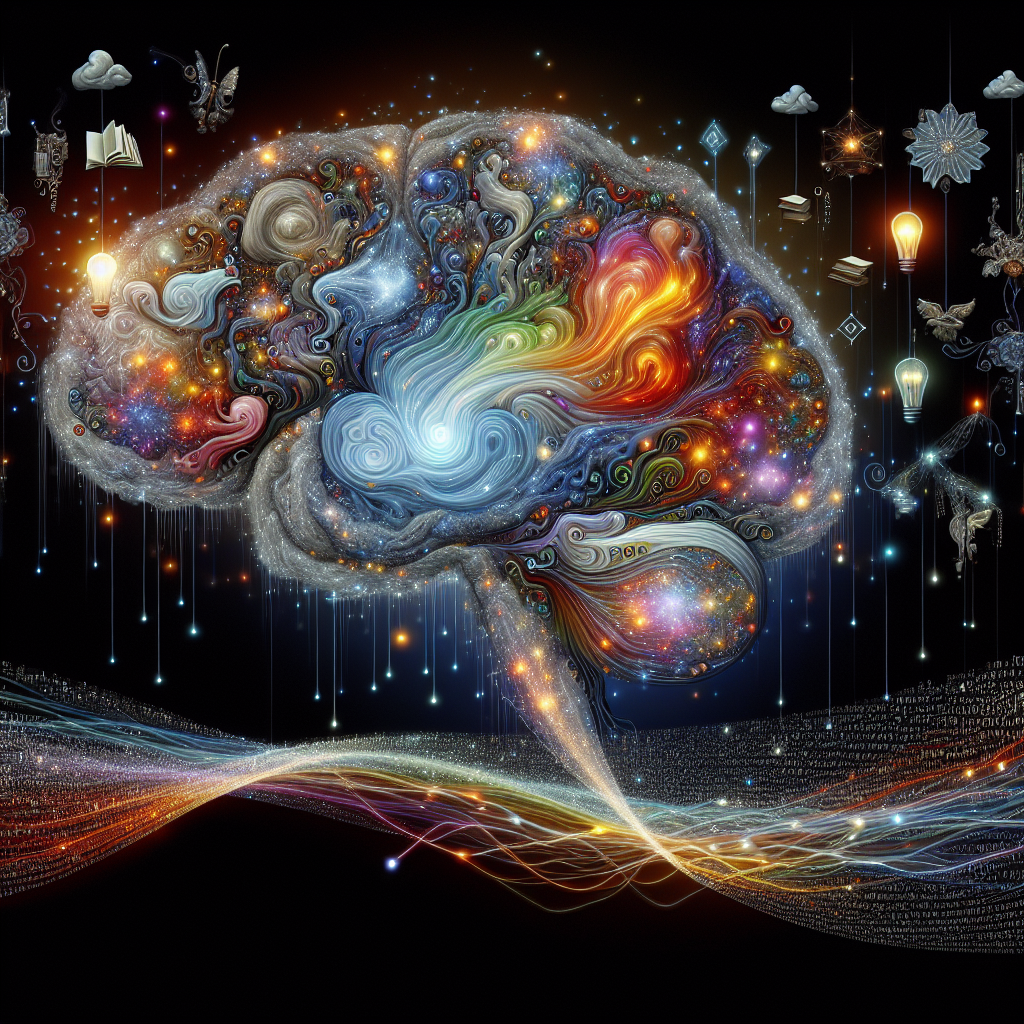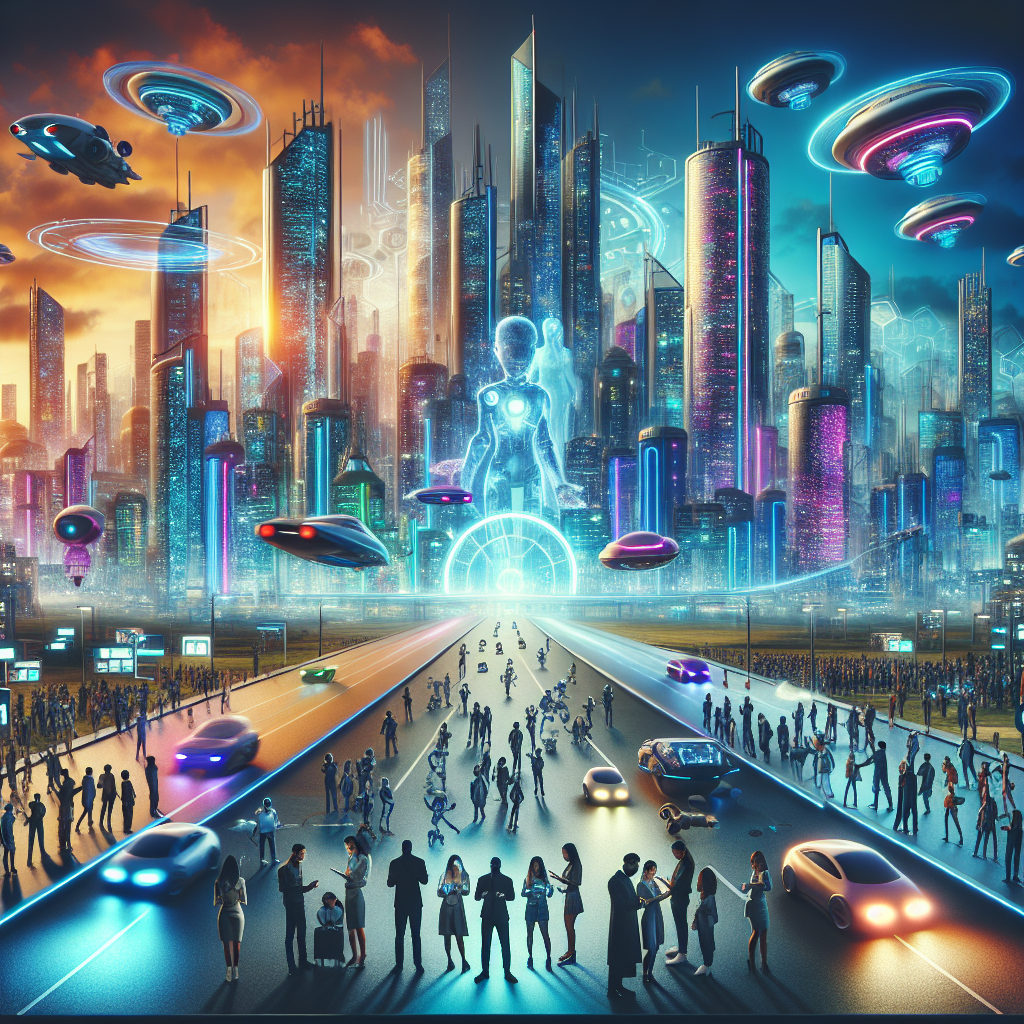-
Table of Contents
Image GPT (Generative Pre-trained Transformer) is a model developed by OpenAI that extends the GPT architecture, originally designed for natural language processing, to the domain of image generation and understanding. It operates by treating images as sequences of pixels and learning to predict pixel values in a manner similar to how GPT predicts the next word in a sentence. This approach allows Image GPT to generate coherent and diverse images from textual descriptions or to continue the patterns of given image inputs. It leverages unsupervised learning on a large dataset of images to capture a wide variety of visual representations, enabling applications in image completion, enhancement, and generation of novel images based on learned patterns.
Exploring the Capabilities of Image GPT for Creative Image Generation

Image GPT, or Generative Pre-trained Transformer for images, represents a groundbreaking advancement in the field of artificial intelligence, particularly in the realm of creative image generation. This innovative technology has the potential to revolutionize how we create, manipulate, and understand images in a digital environment. By leveraging the power of deep learning and neural networks, Image GPT can generate highly detailed and diverse images from textual descriptions, opening up new avenues for creativity and application in various industries.
At its core, Image GPT operates on a similar principle to its predecessor, the text-based GPT models, which have demonstrated remarkable proficiency in generating human-like text. However, Image GPT shifts the focus from text to visuals, training on a vast dataset of images to learn the intricate patterns, textures, and relationships that define visual content. This training enables the model to understand and replicate the complexity of visual scenes, making it capable of producing images that are not only visually appealing but also contextually relevant.
One of the most compelling aspects of Image GPT is its ability to generate images based on textual descriptions. This feature has profound implications for creative industries such as graphic design, advertising, and entertainment. For instance, designers can leverage Image GPT to quickly generate concept art or visual prototypes based on brief textual inputs, significantly reducing the time and effort required in the initial stages of design. Similarly, advertisers can use the technology to create visually engaging content that resonates with their target audience, while filmmakers and game developers can explore new dimensions of storytelling by bringing to life intricate visual scenes described in scripts or game narratives.
Moreover, Image GPT’s capabilities extend beyond mere image generation. The technology also shows promise in tasks such as image editing, style transfer, and even the creation of photorealistic images. By understanding the underlying structure of images, Image GPT can manipulate specific elements within an image or transform the overall style while maintaining the integrity of the original content. This opens up possibilities for personalized content creation, where users can modify images to suit their preferences or requirements without the need for advanced editing skills.
The implications of Image GPT’s capabilities are vast and varied. In the realm of education, for example, the technology could be used to create customized visual aids that enhance learning experiences. In the field of healthcare, Image GPT could assist in generating medical imagery for training or simulation purposes. Furthermore, the technology’s ability to generate realistic images could also contribute to advancements in computer vision, aiding in the development of more sophisticated systems for image recognition and analysis.
Despite its immense potential, the deployment of Image GPT also raises important ethical considerations. The ability to generate realistic images at scale poses challenges related to misinformation, copyright infringement, and privacy. As such, it is crucial for developers and users of Image GPT to navigate these issues responsibly, ensuring that the technology is used in a manner that respects legal and ethical standards.
In conclusion, Image GPT represents a significant leap forward in the field of artificial intelligence, offering unprecedented capabilities for creative image generation. As the technology continues to evolve, it holds the promise of transforming various industries by enabling new forms of creativity, enhancing productivity, and opening up new possibilities for visual communication. However, the successful integration of Image GPT into society will require careful consideration of its ethical implications, ensuring that its benefits are realized while minimizing potential harms.
The Evolution of Image GPT: From Concept to Cutting-Edge Technology
The Evolution of Image GPT: From Concept to Cutting-Edge Technology
In the realm of artificial intelligence (AI), the development of Generative Pre-trained Transformer (GPT) models has marked a significant milestone, especially in the field of natural language processing. However, the application of similar principles to the domain of image generation has led to the emergence of Image GPT, a groundbreaking technology that is reshaping how machines understand and generate visual content. This evolution from text-based models to their image-centric counterparts represents a fascinating journey of technological advancement, one that has bridged the gap between textual and visual understanding in AI.
The inception of Image GPT, or iGPT, can be traced back to the foundational work on GPT models by OpenAI. These models were designed to predict the next word in a sentence, thereby enabling them to generate coherent and contextually relevant text. The leap from processing text to images, however, required a reimagining of how data is represented and interpreted by AI models. Images, unlike text, are composed of pixels and require a different approach to understanding patterns and sequences. This challenge was met with innovative solutions that adapted the transformer architecture, originally designed for sequential data like text, to handle the two-dimensional nature of images.
The transition from concept to cutting-edge technology involved training the iGPT models on vast datasets of images. By treating each pixel in an image as a sequence, similar to how words are treated in sentences, iGPT models learn to predict the next pixel in an image sequence. This approach allows the models to generate images from scratch or complete parts of images in a way that is contextually and visually coherent. The training process, which involves unsupervised learning on a large scale, has enabled iGPT models to achieve remarkable feats in image generation, surpassing previous benchmarks and setting new standards in the field.
One of the most compelling aspects of Image GPT’s evolution is its ability to understand and generate images in a way that mimics human creativity. The models do not merely replicate existing images but can create new, unique visuals that have never been seen before. This capability opens up a plethora of applications, from enhancing visual content creation to aiding in the design process across various industries. Moreover, the technology’s potential extends beyond image generation to include tasks such as image classification, segmentation, and enhancement, showcasing its versatility and wide-ranging impact.
The journey of Image GPT from a conceptual framework to a cutting-edge technology underscores the rapid pace of innovation in AI. It highlights the potential of transformer models to transcend their original domain and adapt to new challenges, paving the way for advancements that were once thought to be within the realm of science fiction. As Image GPT continues to evolve, it promises to further blur the lines between human and machine creativity, offering a glimpse into a future where AI’s understanding and generation of visual content are indistinguishable from that of humans.
In conclusion, the evolution of Image GPT represents a significant leap forward in the field of artificial intelligence. By extending the capabilities of GPT models to the visual domain, this technology has not only enhanced our understanding of how AI can interpret and generate images but also opened up new avenues for creative and practical applications. As we stand on the brink of this new frontier, the potential of Image GPT and its impact on various sectors remains vast and largely untapped, heralding an exciting era of innovation and discovery in AI-driven image generation.
Image GPT in Practice: Case Studies and Applications Across Industries
Image GPT, or Generative Pre-trained Transformer for images, represents a groundbreaking advancement in the field of artificial intelligence, particularly in the realm of image generation and understanding. This technology, leveraging the power of deep learning, has the potential to revolutionize various industries by providing innovative solutions to longstanding challenges. Through the examination of several case studies and applications across different sectors, the versatility and transformative impact of Image GPT become evident.
In the creative industries, such as graphic design and digital art, Image GPT has emerged as a powerful tool for artists and designers. By inputting simple sketches or descriptions, individuals can harness this technology to generate complex, high-resolution images. This capability not only accelerates the creative process but also opens up new avenues for creativity, allowing artists to explore styles and concepts that may have been beyond their technical skills. For instance, a digital artist can input a rudimentary sketch along with a style reference, such as “in the style of Van Gogh,” and Image GPT can produce a detailed artwork that mirrors the intricacies of Van Gogh’s technique. This application not only demonstrates the technology’s ability to understand and replicate artistic styles but also highlights its potential as a collaborative tool in the creative process.
Transitioning from the creative realm to the commercial sector, Image GPT’s impact is equally profound. In the realm of e-commerce, for example, this technology is revolutionizing product visualization and customer experience. Online retailers are now able to generate lifelike images of products in various configurations and settings without the need for physical prototypes or elaborate photoshoots. This not only reduces costs but also significantly shortens the time-to-market for new products. Moreover, by enabling customers to visualize products in different colors, sizes, or in their own living spaces, businesses can offer a more personalized shopping experience, thereby enhancing customer satisfaction and engagement.
Furthermore, in the field of healthcare, Image GPT is paving the way for advancements in medical imaging and diagnostics. Radiologists and other medical professionals are beginning to leverage this technology to enhance the resolution of medical images, such as MRIs or CT scans, making it easier to detect and diagnose conditions at earlier stages. Additionally, Image GPT can generate synthetic medical images for training purposes, providing medical students and professionals with a vast array of cases to study without compromising patient privacy. This application not only underscores the technology’s potential to improve patient outcomes but also highlights its role in medical education and training.
Lastly, in the domain of autonomous vehicles, Image GPT is contributing to safer and more reliable navigation systems. By generating realistic images of various driving scenarios, this technology aids in the training of autonomous driving algorithms, enabling them to better recognize and respond to diverse road conditions and obstacles. This application not only exemplifies the technology’s ability to understand and interpret complex visual environments but also its significance in advancing autonomous vehicle technology.
In conclusion, Image GPT’s applications across industries—from creative arts and e-commerce to healthcare and autonomous vehicles—demonstrate its versatility and transformative potential. By enabling more efficient processes, enhancing creativity, improving customer experiences, and contributing to advancements in healthcare and technology, Image GPT stands at the forefront of the next wave of AI-driven innovation. As this technology continues to evolve, its impact across various sectors is poised to expand, heralding a new era of possibilities and opportunities.

